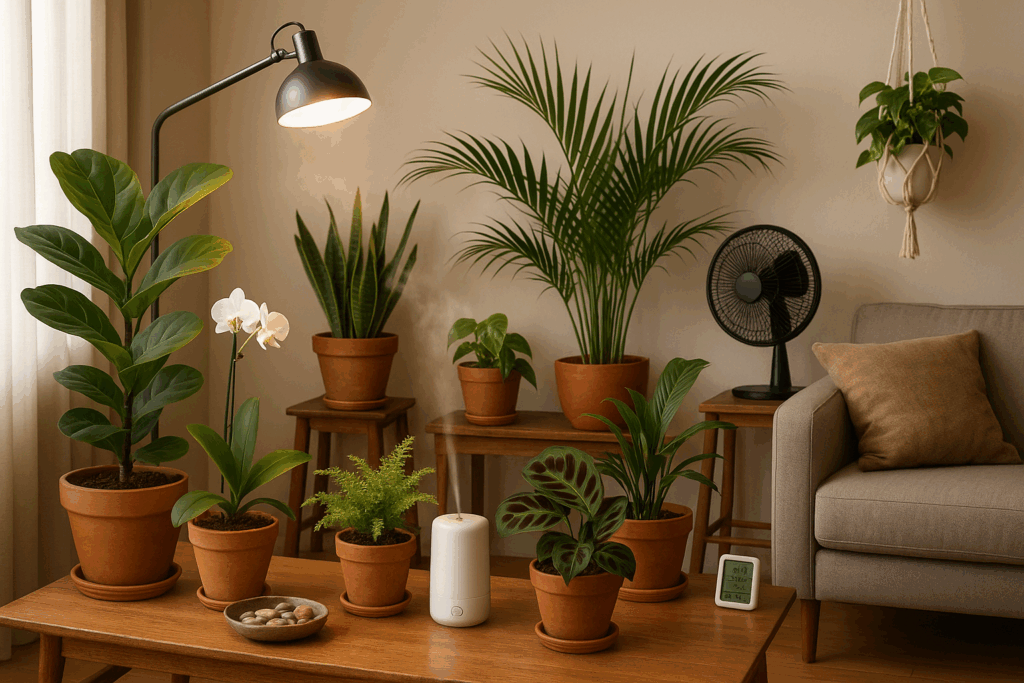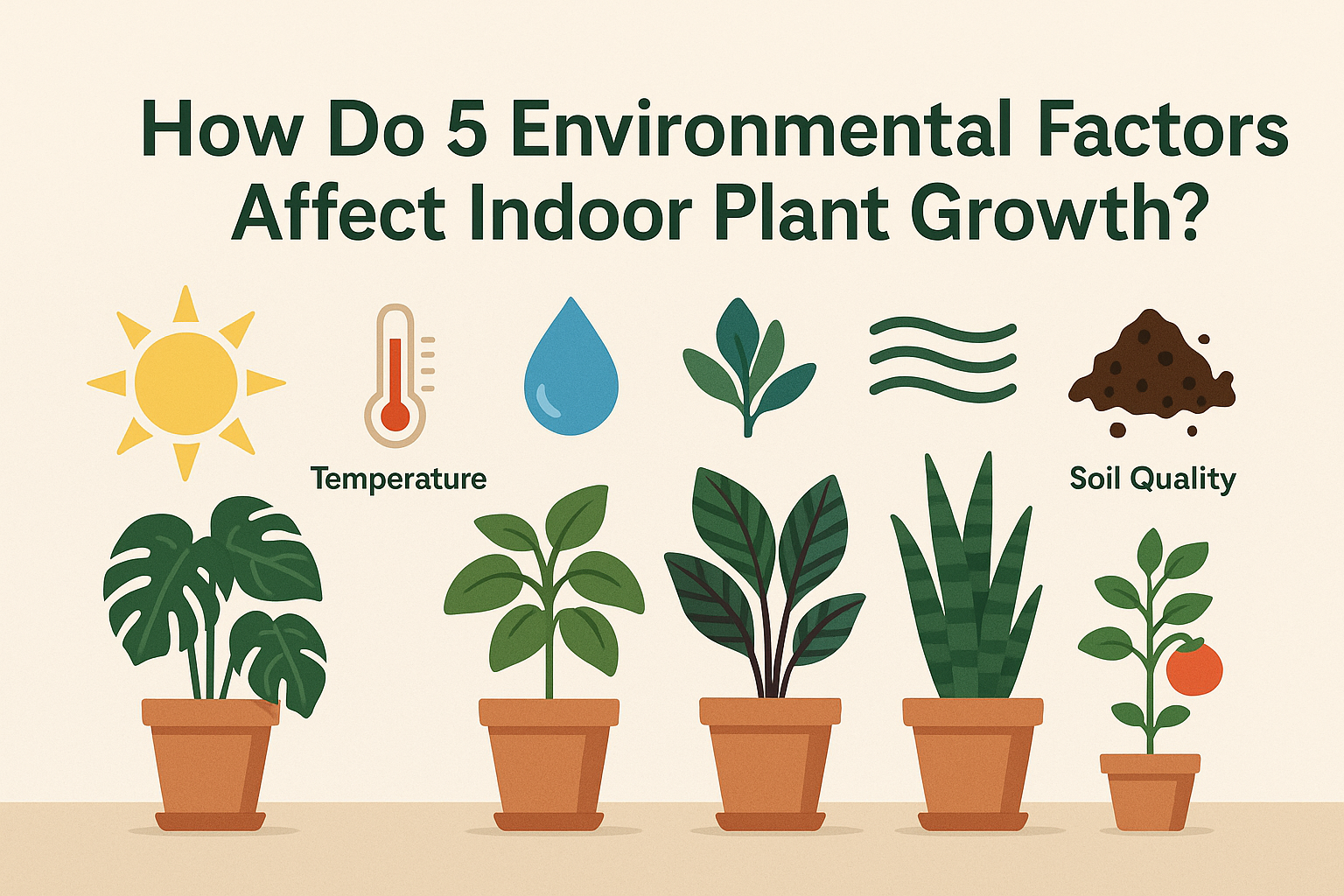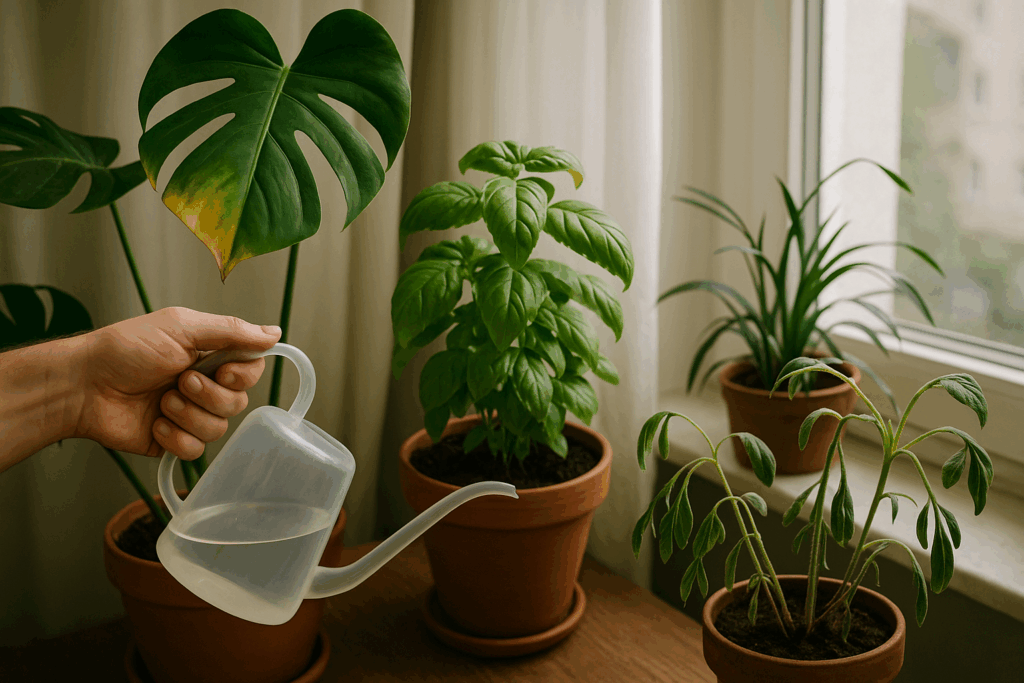
Table of Contents
Toggle5 Environmental Factors Affecting Indoor Plant Growth – Simple Fixes for Stronger Plants
Taking care of indoor plants seems easy, but it has a scientific side to it. You hydrate your monstera, enjoy how your basil grows and all of a sudden everything starts to go wrong.
Leaves that are turning yellow, stems that are drooping or continued stunted growth. Sound familiar? The secret is, it might not be your own mistake. At times, the environmental factors where your plant grows aren’t enough for it. Hot temperatures, a windy window, not enough humidity or inappropriate light can easily disturb your indoor plants.
The bright side of this situation? As soon as you get to know the key environmental factors, you can develop an ideal indoor plant ecosystem. It’s more about taking a bit more care with your home rather than being qualified in botany. We’ll look at the five major environmental factors affecting indoor plants and explain how you can handle them without spending a lot or making your home too humid for comfort.
What Are Environmental Factors, Exactly?
Environmental factors are the circumstances in your plant’s environment, namely light, temperature, humidity, Environmental factors are the circumstances in your indoor plant’s environment, namely light, temperature, humidity, air and soil. Consider it to be their climate-specific area. Don’t expect your fern to grow well if you keep it in dry air and be sure to move your snake plant out of the dark placement where it can germinate. Indoor plants grow well when they’re placed in an environment similar to their natural habitat. This is exactly what these five environmental factors involve, especially in indoor plant growth
1. Light
The Problem
To be honest, most homes aren’t built having plants in mind. Not all homes have enough windows or light which is a problem for many plants. Sometimes the amount of sunlight isn’t enough or lasts too long. When the light levels are low, your indoor plants have trouble with photosynthesis, which causes them to turn pale, become skinny, or not grow at all.
The Fix
If your plants don’t get a lot of sunlight, LED grow lights can help a lot. The bulbs try to recreate all the different wavelengths found in the sun which are important for plant photosynthesis. Each week or every two weeks, turn your plants so all the sides see the light. East and west-facing windows are good for certain sun-loving plants as well as those facing south. For the best results, try to provide 12 to 14 hours of sunlight every day for flowering plants and edible herbs or tomatoes.
2. Temperature
The Problem
The majority of indoor plants hail from tropical regions and like steady heat. Stress can be caused by fast drops in the temperature, chilly air from open windows or very hot radiators. You may see yellowing leaves, browning and sluggish growth.
The Fix
Set the temperature in your room between 65°F and 75°F (18°C to 24°C) to make most indoor plants happy. Keep plants away from air vents, radiators, and windows that let in drafts, as they may be too cold for the plants. Get a digital thermometer to check the temperature everywhere, mainly in zones where the light or air changes often.
3. Humidity
The Problem
Central heating and air conditioning make indoor air drier than the air most plants are used to. Plants such as ferns, calatheas and orchids can only thrive in places with higher humidity. Dry air may make the edges of leaves crisp, slow growth and cause the roots to become uncomfortable.
The Fix
To increase the air moistness: If plants are grouped together, it helps them send moisture to the air. Putting water in shallow containers at plant roots Having a humidifier in the air (this matters most in winter) Having many humidity-loving animals makes humidifiers great to have. Besides making your air cleaner, they can make your skin and lungs healthier too. It is best to keep the humidity level in the home at 40–60% for most plants. You can buy a hygrometer or choose a smart sensor to measure it.
4. Airflow
The Problem
Dying plants don’t like it when there is still air. Without fresh air coming in, your house might end up filled with pests, mold and fungus. This happens most often in places that are crowded with plants. With no airflow, plants are unable to get the energy they require through breathing.
The Fix
Use a fan that runs and can be set to switch off after a set amount of time. Open the window when the conditions are good. Space out the plants enough to prevent them from blocking fresh air. When there are too many plants in one space, humidity gathers and air cannot get in between the leaves which encourages diseases. Remember to change the fan each week to make sure no plant’s moisture is lost in just one direction.
5. Soil Quality
The Problem
There are many types of dirt and some are not the same as others. Having soil of low quality can result in bad drainage, soil compaction, missing nutrients or off-balances in pH. When the roots aren’t healthy, the whole plant experiences problems too. Eventually, the nutrients in soil begin to run out, making it fertile less and less.
The Fix
For your plant, use a potting mix that is meant to promote good drainage. Take succulents, for instance which appreciate soil with lots of sand, while tropical plants prefer soil that is rich and well-draining. It’s good to refresh the soil every 6–12 months, as it returns the nutrients and makes the soil better. Apply the right fertilizer only to each plant so as not to overdo it, since less is really better in winter. A great idea is to use worm castings or compost instead of strong chemicals for soil enrichment.
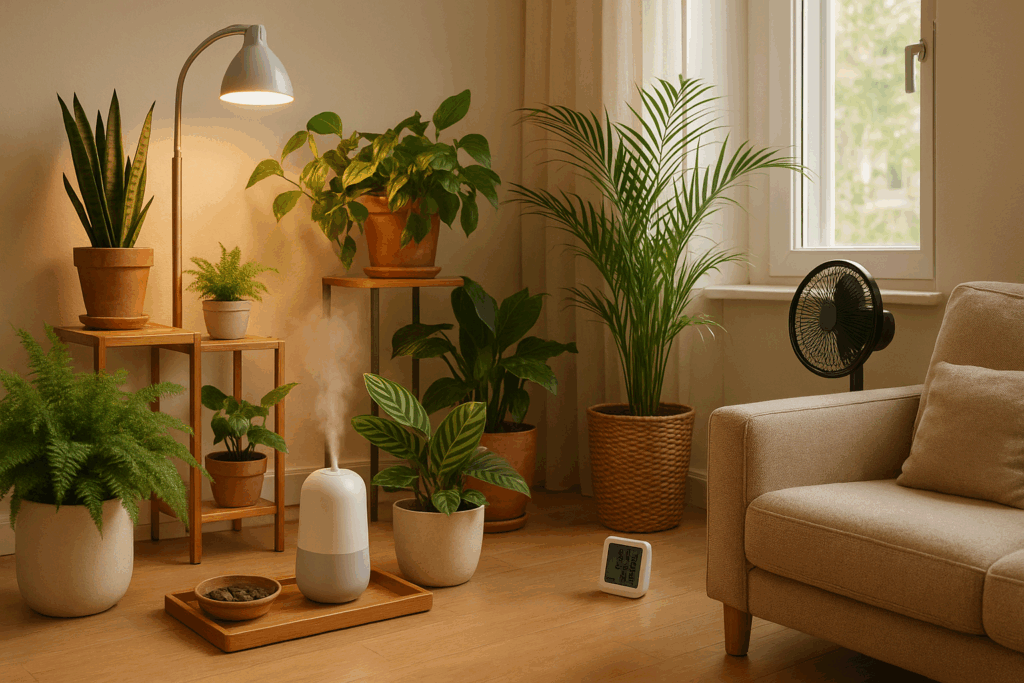
What About Energy Costs?
Even though grow lights and humidifiers use electricity, modern models are very energy efficient, particularly if they are equipped with LEDs and timers. Power your grow lights only during the plants’ activity periods and use humidifiers where many plants are located. If you take a little time to organize, energy use will decrease and your plants will be healthier. Having strong plants results in decline of wastes, less planting is needed and we maintain a greener setup.
Recommended Tools for Better Growth
Here are some top-rated products that can help dial in your plant’s environment, getting them their preferred environmental factors and helping them thrive:
1. GE LED Grow Light Bulbs
These full-spectrum LED bulbs mimic natural sunlight to help your plants thrive indoors.
They’re low heat, energy-efficient, and fit right into regular lamp sockets.
Great if your home doesn’t get a lot of direct light.
Key Features
- Full-spectrum light encourages photosynthesis
- Safe to use near plants—doesn’t overheat
- Long-lasting (up to 25,000 hours)
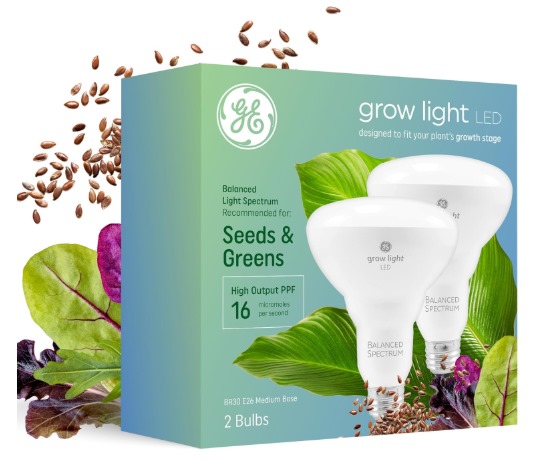
What’s great about this product
These are a perfect fix for dim corners where plants usually struggle.
They’re super easy to install and don’t need any fancy equipment.
Your leafy friends get the light they need, and you save on energy too.
2. Levoit Classic 200 Humidifier
Quiet, compact humidifier that adds moisture to dry air—great for both plants and people.
It has a 4-liter tank, so it runs for hours without constant refills.
Ideal for bedrooms or plant-filled nooks.
Key Features
- Adjustable mist levels for better control
- Auto shut-off when the water runs low
- Easy to clean and refill
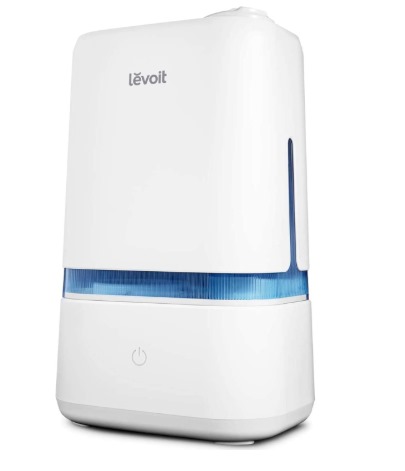
What’s great about this product
It gently raises humidity without turning your space into a rainforest.
You’ll notice fewer crispy leaf tips and happier tropical plants.
Plus, your skin and sinuses will thank you—especially in the winter.
3. Soil Test Kit 3-in-1
A simple, no-battery tool that checks your soil’s moisture, light, and pH levels.
Just stick it in the pot and read the dial—no guesswork needed.
Helps you understand what your plant really needs.
Key Features
- Checks 3 key things in seconds: light, moisture, and pH
- Compact and easy to use
- Works indoors and out
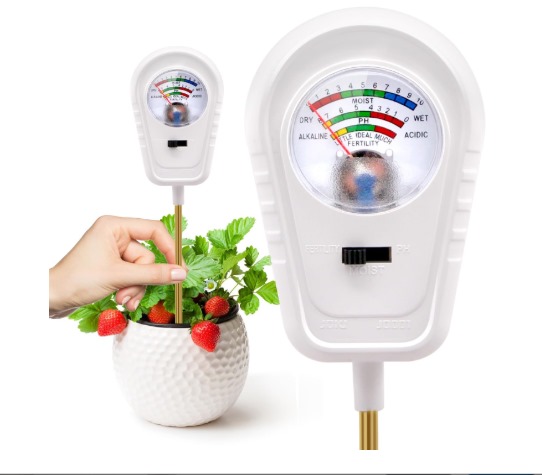
What’s great about this product
It takes the mystery out of plant care, especially if you’re new to it.
You’ll know exactly when to water or move your plant for more sun.
No apps or charging—just fast, useful feedback.
4.HT.w Smart Sensor
A tiny smart sensor that keeps tabs on air conditions around your plants.
Connects to your phone via Bluetooth so you can track changes in real time.
Great if you like peace of mind or travel often.
Key Features
- Real-time monitoring on your smartphone
- Accurate readings with compact design
- Water-resistant and durable
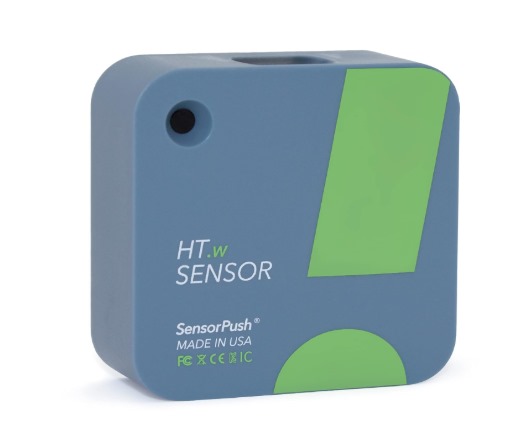
What’s great about this product
It gives you a heads-up before your plants get stressed out.
Great for rooms that get cold drafts or dry out quickly.
You don’t need to babysit your plants—just check the app when you want.
FAQs
Can regular LED bulbs help plants grow?
They can, but they lack the full spectrum of wavelengths. Grow lights are designed for photosynthesis and lead to better results.
Do all plants need a humidifier?
Nope. Tropicals love humidity, but succulents, cacti, and air plants prefer dry air.
How often should I rotate my plants?
Once every 1–2 weeks to ensure balanced light exposure and even growth.
Final Thoughts
There is more to taking care of indoor plants than watering them just on a given day. Making them feel at home is the main goal, giving them the perfect environmental factors to prosper as Mother Nature intended. All of these environmental factors such as light, temperature, humidity, airflow and soil, are important for successful indoor plant gardening. As soon as these five points are met, your indoor plants will give you beautiful leaves, pretty blooms and clean air. Start small. Do not make too many changes at one moment; instead, adjust two environmental factors at most. Regardless of whether you have a few herbs or a lot of indoor plants, you’ll notice changes and so will your houseplants. Give your indoor plants enough space and they will reward you with a feeling of peace and beauty.
